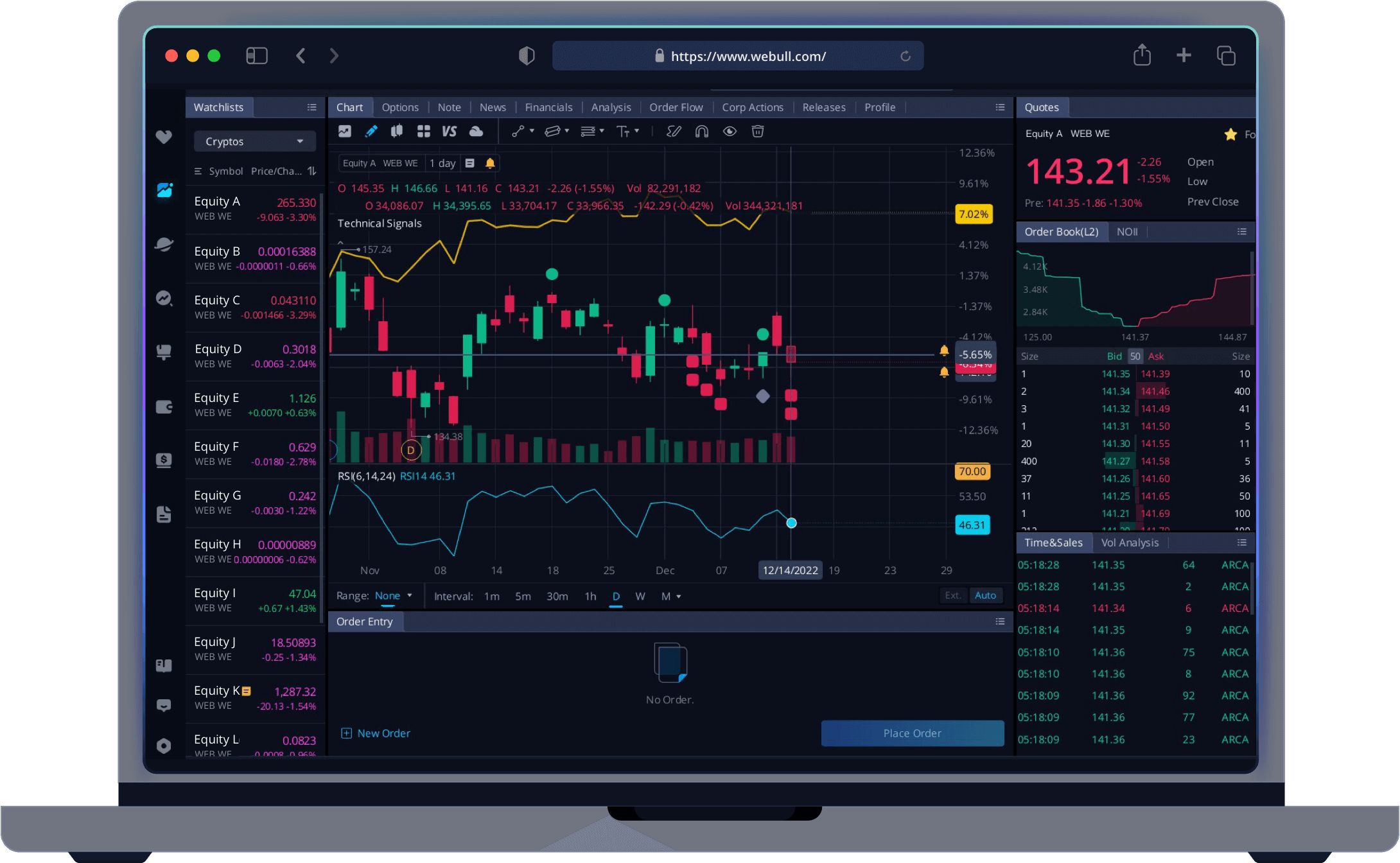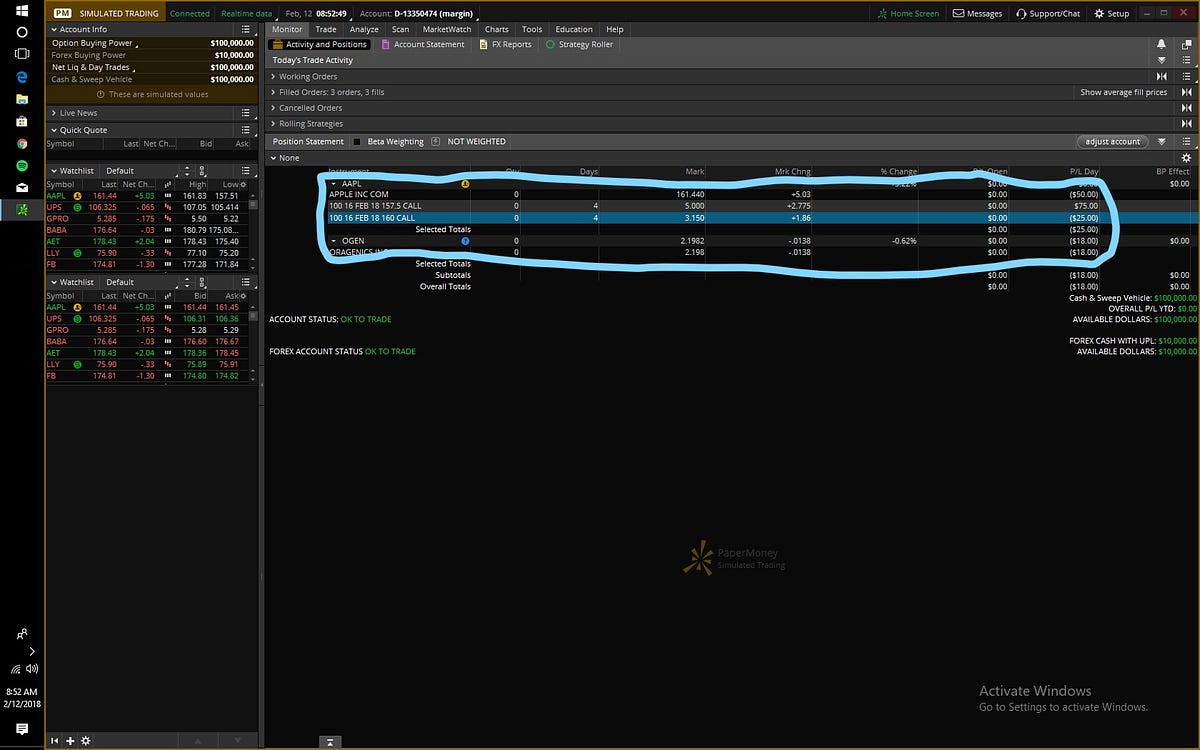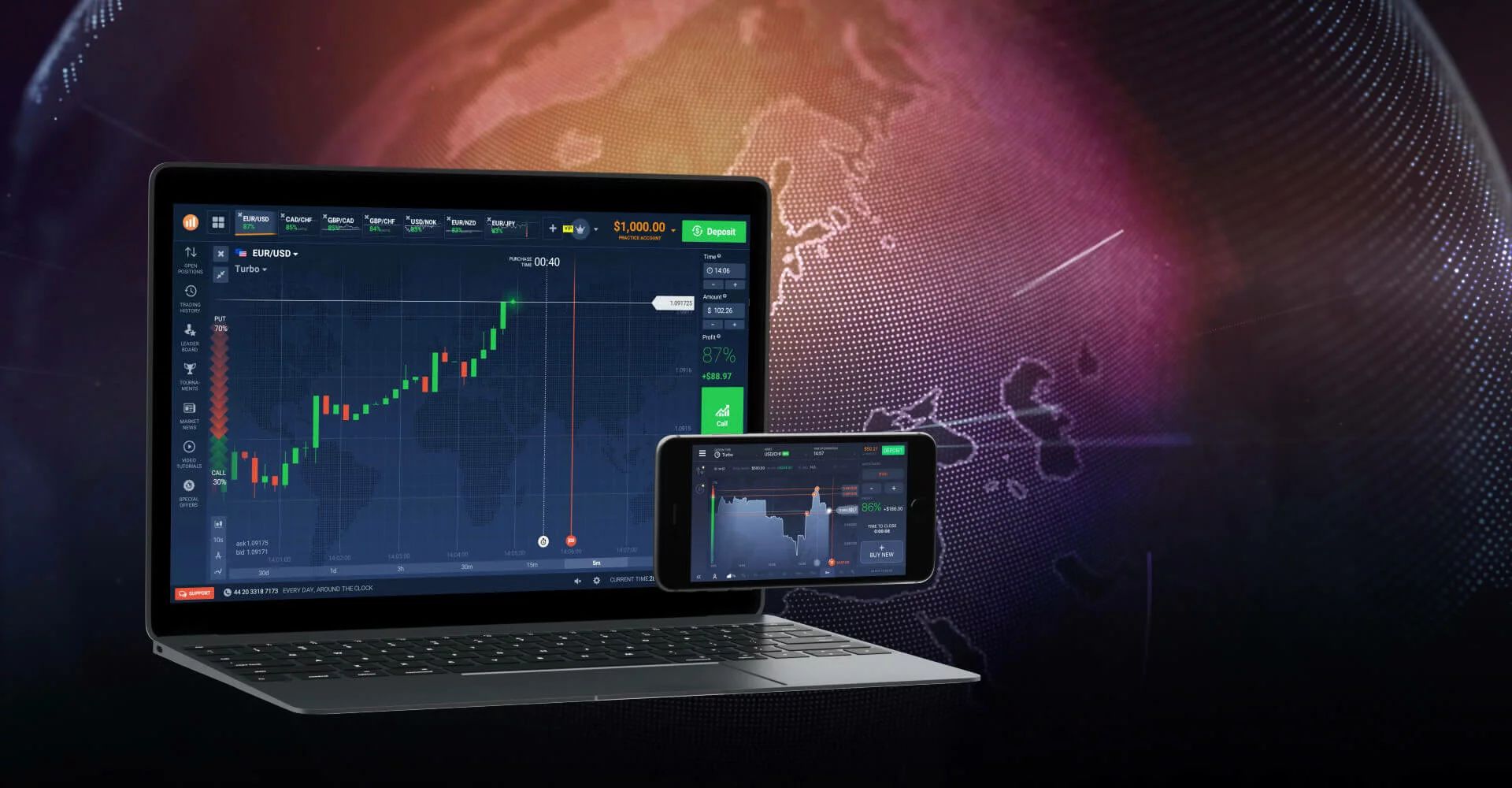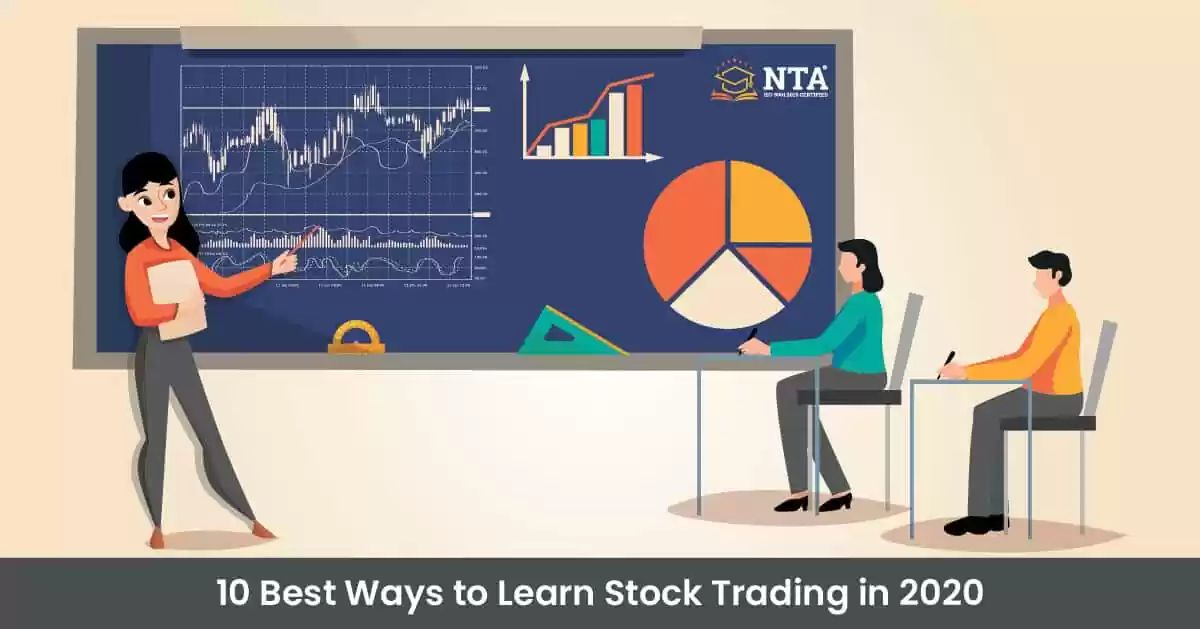Introduction
Welcome to the world of paper trading accounts! If you are new to the world of trading or looking to test your trading strategies without risking real money, a paper trading account can be an invaluable tool. In this article, we will explore the concept of paper trading accounts, how they work, and the benefits they offer.
A paper trading account, also known as a virtual trading account or demo account, is a platform provided by brokerage firms or financial institutions that allows individuals to simulate trading with virtual money. Unlike live trading accounts, which involve real money, paper trading accounts provide users with a risk-free environment to practice trading strategies, test new ideas, and gain hands-on experience.
The concept of paper trading is based on the principle that practice makes perfect. By using a paper trading account, traders can gain confidence in their abilities, learn from their mistakes, and refine their strategies before venturing into the live trading market.
One of the key advantages of a paper trading account is the ability to trade in real-time market conditions without the fear of losing money. This allows traders to experience the ups and downs of the market, understand the impact of various factors on stock prices, and develop a better understanding of market trends.
Moreover, paper trading accounts offer a wide range of financial instruments, including stocks, options, futures, and currencies, allowing traders to explore different markets and diversify their portfolios. Whether you are interested in day trading, swing trading, or long-term investing, a paper trading account provides a risk-free space to practice and refine your trading strategies.
In the next sections of this article, we will delve deeper into how paper trading works, the benefits it offers, common mistakes to avoid, the differences between paper trading and live trading, and how to open a paper trading account. So, let’s jump right in and explore the exciting world of paper trading accounts!
Definition of Paper Trading Account
A paper trading account, also known as a virtual trading account or demo account, is a platform provided by brokerage firms or financial institutions that allows individuals to simulate trading with virtual money. It serves as a practice environment for traders to learn, test, and refine their trading strategies without risking real capital.
In a paper trading account, users are provided with a virtual balance that simulates the funds they would have in a live trading account. They can then use this virtual balance to place trades, monitor market movements, and track the performance of their investments.
The primary purpose of a paper trading account is to give traders a hands-on experience of trading in the financial markets without the associated risks. It enables traders to get familiar with the trading platform, understand how to execute trades, analyze market data, and manage their portfolio.
Traders can access a wide range of financial instruments, including stocks, options, futures, and currencies, depending on the offerings of the specific brokerage or financial institution. This allows individuals to gain exposure to different markets and practice different trading strategies.
The data provided in a paper trading account is often sourced from real-time market feeds, ensuring that traders experience market movements as they would during live trading. This feature of paper trading accounts offers an excellent opportunity for traders to test their strategies under realistic market conditions.
It’s important to note that while paper trading accounts simulate the market environment accurately, there are certain limitations. Some factors, such as liquidity and slippage, may not be fully replicated in a paper trading account. Traders should be aware of these limitations and consider them when interpreting the results of their paper trading activities.
Overall, a paper trading account is a valuable tool for both beginner and experienced traders. It provides a risk-free environment to practice trading strategies, test new ideas, and gain confidence in making investment decisions. By using a paper trading account effectively, traders can enhance their skills, minimize potential losses, and increase their chances of success in the live trading market.
How Paper Trading Works
Paper trading works by providing traders with a virtual environment that simulates real market conditions. Here’s a breakdown of how it works:
1. Sign up for a paper trading account: To get started, traders need to sign up for a paper trading account with a reputable brokerage or financial institution. This typically involves providing some personal information and agreeing to the terms and conditions of the platform.
2. Virtual funds: Once the account is set up, traders are allocated a virtual balance, which serves as their capital for trading in the simulated market. This virtual balance can vary depending on the platform, ranging from a few thousand dollars to millions, allowing traders to practice with different investment amounts.
3. Simulated trading platform: Traders access the paper trading platform, which closely resembles the actual trading platform offered by the brokerage firm. This platform provides real-time market data, news feeds, charts, and other trading tools necessary for making informed investment decisions.
4. Placing trades: Traders can use their virtual funds to place simulated trades. They have access to a variety of financial instruments, such as stocks, options, futures, and currencies, enabling them to explore different markets and practice different trading strategies.
5. Monitoring performance: Once trades are executed, traders can monitor the performance of their virtual portfolio. This includes tracking gains or losses, analyzing market trends, and evaluating the effectiveness of their trading strategies.
6. Learning and refining strategies: Throughout the paper trading process, traders have the opportunity to learn from their successes and failures. They can analyze trade outcomes, identify patterns, and refine their strategies based on the insights gained from their virtual trading experience.
7. Resetting or transitioning to live trading: Paper trading accounts often have the option to reset the virtual balance, allowing traders to start fresh with a new set of virtual funds. Alternatively, once traders have gained confidence and are ready to trade with real money, they can transition to a live trading account and apply their refined strategies in the real market.
It’s important to note that while paper trading provides a realistic simulation of the market environment, it cannot replicate the emotional aspects of live trading. Traders should be aware that the psychological impact of real money is different from trading with virtual funds. However, paper trading remains a valuable tool for practice and skill development.
By utilizing a paper trading account effectively, traders can gain valuable experience and refine their strategies, improving their chances of success when they eventually transition to live trading.
Benefits of Paper Trading
Paper trading offers several benefits to both beginner and experienced traders. Let’s explore some of the key advantages of utilizing a paper trading account:
1. Risk-free practice: Perhaps the most significant benefit of paper trading is the ability to practice trading strategies without risking real money. This allows traders to test their strategies, gain experience, and make mistakes without the fear of financial loss. It provides a safe environment to learn and refine techniques before entering the live market.
2. Familiarity with the trading platform: Paper trading accounts use the same trading platform offered by the brokerage firm for live trading. By using a paper trading account, traders can familiarize themselves with the platform’s layout, features, and functionality, making them more comfortable when they transition to live trading.
3. Testing different trading strategies: Paper trading allows traders to explore and test different trading strategies without the fear of losing money. They can experiment with various techniques, time frames, and indicators to determine what works best for them. This flexibility enables traders to refine their approaches and identify the most effective strategies for their trading goals.
4. Understanding market trends and indicators: Paper trading provides the opportunity to monitor and analyze market trends and indicators. Traders can study how different news events, economic releases, and market conditions impact the prices of financial instruments. This helps traders develop a better understanding of the market and make informed trading decisions.
5. Learning from mistakes: Making mistakes is an essential part of the learning process in trading. With a paper trading account, traders can learn from their mistakes without any financial consequences. They can analyze their trades, identify areas for improvement, and adjust their strategies accordingly. This reflective practice is crucial for enhancing trading skills and avoiding costly errors in the live market.
6. Confidence building: Paper trading allows traders to build confidence in their abilities by experiencing successful trades and understanding the factors that contribute to their success. As traders witness positive outcomes in their virtual portfolio, they gain the confidence to execute trades in the live market.
7. Portfolio diversification: Paper trading accounts offer access to a wide range of financial instruments, enabling traders to practice diversifying their portfolios. Traders can experiment with different asset classes, sectors, and investment styles to understand how diversification can help spread risk and potentially improve portfolio performance.
8. Real-time market experience: Paper trading accounts provide the opportunity to trade in real-time market conditions. Traders can experience the volatility, price fluctuations, and order execution process as they would in live trading. This exposure to real market scenarios enhances decision-making skills and prepares traders for the challenges of live trading.
By harnessing the benefits of paper trading, traders can gain valuable experience, refine their strategies, and build the necessary confidence to navigate the live trading market successfully.
Common Mistakes to Avoid in Paper Trading
While paper trading provides a valuable learning experience, it’s essential to be mindful of certain common mistakes that traders tend to make. By avoiding these pitfalls, traders can make the most of their paper trading journey. Here are some common mistakes to steer clear of:
1. Not taking it seriously: One of the biggest mistakes is treating paper trading as a game rather than a learning opportunity. Traders must approach it with the same discipline and dedication as they would with live trading. By taking it seriously, traders can develop good habits, proper risk management, and a realistic mindset.
2. Overtrading: Another common mistake is excessive trading, often driven by the lack of real money on the line. Traders may be tempted to place trades impulsively or without proper analysis. Overtrading can hinder the learning process and distort the results. It’s important to focus on quality trades rather than quantity.
3. Neglecting risk management: Risk management is a crucial aspect of trading, regardless of whether it’s paper trading or live trading. Traders should establish risk parameters, set stop-loss orders, and determine position sizes based on their risk tolerance. Neglecting risk management can lead to significant losses and inflated expectations.
4. Ignoring emotions: Although paper trading doesn’t involve real money, traders must recognize and manage their emotions. Emotions such as fear, greed, and overconfidence can still impact decision-making. It’s essential to approach paper trading with the same emotional control as one would in live trading.
5. Lack of consistency: Consistency is key to success in trading. In paper trading, it’s crucial to maintain consistency in trade execution, risk management, and recording results. Traders should aim to follow their strategies consistently to accurately assess their effectiveness and make necessary adjustments.
6. Chasing unrealistic returns: It’s common for traders to fall into the trap of chasing unrealistic returns during paper trading. This can lead to taking excessive risks or deviating from sound trading strategies. It’s important to set realistic expectations and focus on the learning process rather than solely focusing on profits.
7. Not journaling and analyzing trades: Keeping a trading journal and analyzing trades is vital for progress in paper trading. Traders should record the rationale behind each trade, including entry and exit points, and review them regularly. This will help identify patterns, strengths, weaknesses, and areas for improvement.
8. Neglecting to adjust for live trading conditions: Paper trading may not accurately mirror the real market conditions faced in live trading. Traders should be aware of this and make adjustments when transitioning to live trading. Slippage, liquidity, and other factors can greatly impact trade execution and outcomes.
By being mindful of these common mistakes, traders can enhance their paper trading experience and increase their readiness for live trading. Developing good habits, maintaining discipline, and learning from mistakes will contribute to becoming a successful trader in the long run.
Differences Between Paper Trading and Live Trading
While paper trading offers numerous benefits, it’s important to understand the key differences between paper trading and live trading. Recognizing these distinctions will help traders make a smooth transition from paper trading to the real market. Here are some of the main differences to consider:
1. Emotional Impact: One of the significant differences between paper trading and live trading is the emotional aspect. In paper trading, there is no real money at stake, which can make it easier to remain calm and detached from the outcome of trades. However, in live trading, the emotional impact of gains and losses can be intense. Traders need to learn how to manage emotions effectively to make rational decisions.
2. Execution and Slippage: The execution of trades in paper trading accounts is typically instantaneous, without any slippage. In contrast, live trading may have delays in order execution and slippage due to market conditions or liquidity. Traders need to consider these factors and adjust their strategies accordingly.
3. Risk and Reward: Paper trading involves no real financial risk, as traders are using virtual funds. However, in live trading, real money is at stake, and losses can have a direct impact on one’s financial situation. This difference can affect decision-making and risk tolerance.
4. Market Liquidity: In paper trading, the liquidity of the market may not accurately reflect real market conditions. Illiquid stocks or highly volatile markets may not be accurately simulated, which can impact the execution of trades in live trading.
5. Psychological Impact: The psychological impact of trading real money is markedly different from paper trading. The fear, greed, and pressure associated with real money can influence decision-making and behavior during live trading. Traders must learn to manage their emotions and stick to their strategies even under stressful conditions.
6. Order Filling: In paper trading, orders are usually filled at the displayed price. However, in live trading, the actual price at which the order is executed may differ due to bid-ask spreads and market fluctuations. Traders need to consider this difference when analyzing the results of their paper trading activities.
7. Market Impact: In live trading, larger orders have the potential to impact the market and can result in slippage, especially in less liquid markets. This market impact is not replicated in paper trading.
8. Time Constraints: Paper trading allows traders to test strategies and explore the market at their own pace. However, in live trading, time constraints can play a significant role. Traders need to consider market hours, news releases, and the impact of different trading sessions on their strategies.
Understanding these differences between paper trading and live trading is crucial for traders to effectively transition from a virtual environment to the real market. It’s essential to practice proper risk management, develop emotional resilience, and adjust strategies to adapt to real market conditions. By doing so, traders can increase their chances of success in live trading.
How to Open a Paper Trading Account
Opening a paper trading account is a simple process that allows individuals to practice trading strategies without risking real money. Here’s a step-by-step guide to opening a paper trading account:
1. Research and select a brokerage firm: Start by researching reputable brokerage firms or financial institutions that offer paper trading accounts. Look for well-established companies with a user-friendly platform and a wide range of financial instruments.
2. Visit the brokerage firm’s website: Once you’ve identified a suitable brokerage firm, visit their website to access the paper trading account registration page. Look for a dedicated section or page specifically for opening a paper trading account.
3. Fill out the registration form: Complete the registration form with accurate and relevant personal information. Some brokerage firms may require additional details such as your country of residence, social security number, or identification documents to verify your identity.
4. Agree to the terms and conditions: Before opening a paper trading account, carefully review and understand the terms and conditions provided by the brokerage firm. Ensure that you agree to the terms before proceeding with the registration.
5. Create a username and password: Choose a unique username and a strong password to secure your paper trading account. It’s essential to use a combination of letters, numbers, and special characters to ensure the security of your account.
6. Choose a virtual balance: Some brokerage firms offer a choice of virtual balances for their paper trading accounts. Select a virtual balance that aligns with your trading goals and provides sufficient funds to practice different trading strategies effectively.
7. Install the trading platform: After completing the registration process, you may need to download and install the trading platform provided by the brokerage firm. Follow the instructions provided to successfully install and launch the platform on your computer or mobile device.
8. Familiarize yourself with the platform: Take the time to explore the features, functionality, and trading tools available on the paper trading platform. Learn how to place trades, analyze market data, and monitor the performance of your virtual portfolio.
9. Practice and refine your trading strategies: Once your paper trading account is set up, start practicing your trading strategies. Experiment with different markets, financial instruments, and time frames to gain hands-on experience and refine your trading skills.
10. Evaluate your performance: Throughout your paper trading journey, regularly evaluate your performance. Analyze your trades, review your decision-making process, and identify areas for improvement. Keep a trading journal to track your progress and make necessary adjustments to your strategies.
By following these steps, you can open a paper trading account and begin practicing trading strategies without risking real money. Utilize this valuable learning tool to gain experience, test different approaches, and prepare yourself for live trading in the financial markets.
Tips for Successful Paper Trading
Paper trading can be an effective way to improve your trading skills and gain confidence before venturing into live trading. To make the most of your paper trading experience, consider the following tips:
1. Treat it like real trading: Approach paper trading with the same mindset and discipline as you would live trading. Take it seriously, follow your trading plan, and make decisions based on thorough analysis and strategy.
2. Set realistic goals: Define clear and achievable goals for your paper trading activities. Whether it’s testing a specific strategy, improving your decision-making process, or mastering a particular market, have a clear objective in mind. This will keep you focused and motivated throughout the paper trading journey.
3. Practice proper risk management: Implement sound risk management techniques, even in paper trading. Set stop-loss orders, determine position sizes based on your risk tolerance, and stick to your risk-reward ratios. This will help you develop good habits and prepare for managing risks in live trading.
4. Keep a trading journal: Maintain a detailed trading journal to record your trades, rationales, and emotions. Regularly review and analyze your journal entries to identify patterns, strengths, weaknesses, and areas for improvement. Tracking your progress will significantly enhance your learning experience.
5. Test different strategies: Use paper trading as an opportunity to experiment with various trading strategies. Test different indicators, time frames, and approaches to find what works best for you. Take note of the strategies that yield positive results and refine them further.
6. Be patient and avoid overtrading: Practice patience and restraint in your paper trading activities. Avoid the temptation to place trades impulsively or excessively. Focus on quality trades rather than quantity and wait for optimal setups based on your strategy.
7. Simulate real trading conditions: To make your paper trading experience as realistic as possible, try to replicate real trading conditions. This includes trading during regular market hours, considering market news and events, and factoring in transaction costs and slippage in your trades.
8. Embrace failures as learning opportunities: Don’t be discouraged by losses or unsuccessful trades in paper trading. Instead, view them as valuable learning opportunities. Analyze your mistakes, identify the reasons behind them, and adapt your strategies accordingly. Learning from failures is crucial for growth as a trader.
9. Seek feedback and guidance: Consider joining trading communities or seeking guidance from experienced traders or mentors. Engaging with others in the trading community can provide valuable insights, feedback, and support. Incorporating different perspectives can help broaden your knowledge and improve your trading skills.
10. Transition to live trading gradually: Once you feel confident in your paper trading results, consider transitioning to live trading gradually. Start with a small account size and trades to acclimate yourself to the emotional and real-money aspects of trading.
By following these tips, you can maximize the benefits of paper trading and build a solid foundation for successful trading. Remember that paper trading is not a guarantee of future success, but it can significantly enhance your skills and confidence as a trader.
Conclusion
Paper trading accounts provide a valuable learning and practice platform for traders of all levels. By simulating real market conditions without the risk of losing real money, traders can refine their strategies, gain experience, and build confidence before transitioning to live trading.
Throughout this article, we explored the definition of paper trading accounts, how they work, and the benefits they offer. Paper trading allows traders to practice in a risk-free environment, become familiar with trading platforms, test different strategies, and learn from their mistakes. It also provides an opportunity to understand market trends, practice risk management, and develop emotional resilience.
However, it’s crucial to recognize the differences between paper trading and live trading. Emotions, execution, risk, market liquidity, and other factors differ between the two environments. Traders must manage these differences effectively when transitioning to live trading.
To successfully use a paper trading account, traders should approach it seriously, set realistic goals, practice proper risk management, and keep a trading journal. Testing different strategies, practicing patience, and seeking feedback from experienced traders can also contribute to success in paper trading. Gradually transitioning to live trading with a small account size is recommended to adjust to the emotional and financial aspects of real trading.
In conclusion, paper trading is an invaluable tool for traders to gain experience, refine strategies, and build confidence without risking real money. By leveraging the benefits of paper trading and implementing the tips provided, traders can enhance their skills and increase their chances of success in live trading.
So, whether you are a beginner looking to dip your toes in the trading world or an experienced trader wanting to test new strategies, paper trading is a valuable step in your journey. Embrace the learning process, stay disciplined, and leverage the power of paper trading to become a more successful and confident trader.

























